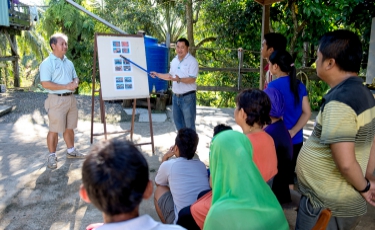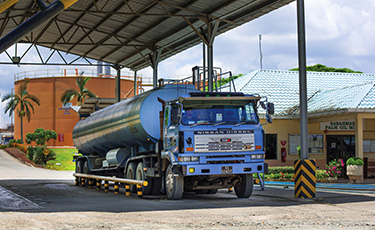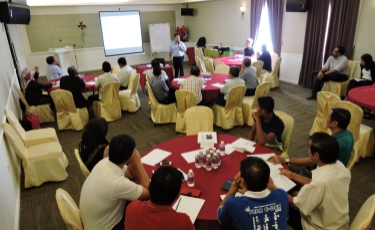Biodiversity
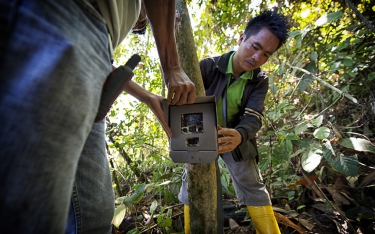
We are committed to biodiversity conservation in Wilmar operations and our supply chain. HCV and conservation areas play an important role in biodiversity conservation, maintaining and sustaining its ecological functions. We ensure biodiversity conservation through identification and management of HCV-HCSA and conservation areas for Wilmar operations and our suppliers. To further support the Convention of Biological Diversity and SDG, we support biodiversity conservation through various conservation programmes and partnerships such as Pongo Alliance.
About 10% of Wilmar's total oil palm land bank has been set aside for conservation areas. Wilmar has 82 sites that account for 307,452 ha in total for operational activities with a total of 35,699.68 ha of conservation areas. Of these, 26 sites, with approximately 11,458.15 ha, are near critical biodiversity areas. 100% of these sites have been subjected to biodiversity assessments and we monitor our conservation areas including critical biodiversity areas continuously and have biodiversity management plans in place.
Over the years, our conservation areas have become sanctuaries for many rare, threatened, and endangered (RTE) species, as regular patrols and monitoring are incorporated as part of the management plans for these areas. Identified through HCV assessments and regular monitoring of our concessions and surrounding landscape, these species, and their habitats are classified as HCV to be conserved and protected.
Please refer to this link for the list of protected RTE species which can or potentially be found in some of Wilmar's conservation areas. These protected species are listed on the International Union for Conservation of Nature as well as the national conservation law of our respective countries of operations.
Another important aspect of conservation is the protection of riparian and all waterways within our operations through the maintenance and restoration of buffer zones. Riparian areas bordering rivers and water bodies are critical habitats with significant environmental benefits for both flora and fauna, as well as the local communities.
To expand our biodiversity conservation efforts, we have integrated biodiversity conservation as one of the key elements for our suppliers as part of the Supplier Guidelines. Referencing our NDPE policy and adherence to the HCV-HCS definitions, we prioritize the protection of forest and unique ecosystems, species and landscape conservation, and maintaining community livelihood and food security. We promote best management practices among our stakeholders, including suppliers and smallholders.
Our Best Management Practices Series includes:
- BMP Manual for Growers on Conservation and Community Collaboration: English | Bahasa Indonesia
- Practical Guidance on Conservation Areas Monitoring: English | Bahasa Indonesia | Bahasa Melayu
- Guide on Responsible Environmental Practices and Conservation of Ecosystems (Booklet): English | Bahasa Indonesia | Bahasa Melayu
Siamang is a species of gibbon found mainly in Peninsular Malaysia and the provinces of Sumatra in Indonesia. They are categorised as vulnerable to extinction under the International Union for Conservation of Nature (IUCN) Red List of species.
Wilmar has been partnering with the Kalaweit Foundation on a rehabilitation programme for rescued Siamangs to be returned to the wild. On 10 August 2016, Wilmar signed a second Memorandum of Understanding (MoU) with Kalaweit Foundation, to extend our partnership on rehabilitation of rescued Siamang gibbons for a further five years.
Kalaweit Foundation first released three pairs of Siamangs into the HCV area in Wilmar’s plantation in Sumatra in early 2015. This initial release was met with mixed results as all the original pairs had to be replaced due to injuries or disappearance. Kalaweit has since replaced the three original pairs, and continues to monitor their progress in assimilating into the environment. The extension of the MoU will enable Wilmar and Kalaweit to continue our collaboration, to monitor the three pairs and potentially release of another four more pairs in another HCV area in the same estate.
Please refer to this sustainability brief for more information on our gibbon rehabilitation and reintroduction programme.
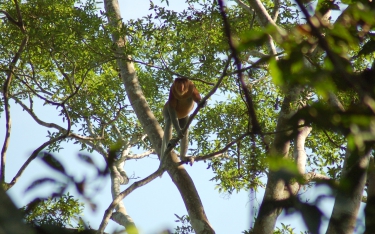
Wilmar is committed to protect and conserve riparian areas throughout our own operations.
In East Malaysia, Wilmar has been partnering with the Sabah Forestry Department to enrich and enlarge riparian areas in state and company land, and restore habitats for the population of endangered Proboscis Monkeys and Silvered Langurs.
The project objectives are to conserve and expand the riparian area along the Segama river in Sabah, from 20m to 50m. So far, over 55,000 trees have been planted along a 47km stretch of riparian areas to increase the availability and variety of food for proboscis monkeys. There has also been natural regeneration of trees along the area.
Since 2015, this partnership has been extended to include a new 110 ha site, the Sapi-Sapapayau riparian project. Over 13,000 trees have been planted since the start of this project.
Please refer to these links for more information on our riparian rehabilitation project in Sungai Segama
The Sekar Imej Conservation Area (SICA) is the largest conservation area in Wilmar’s operations in Malaysia, spanning a total of 2,469 hectares in the interiors of the Beluran District in Sabah. Located within our plantation’s concession boundary, the SICA project is an ongoing joint effort between Wilmar and our stakeholders, including the surrounding local communities, to protect and preserve the largely Lowland Mixed Dipterocarp Forest. The initiative aims to develop SICA as a Biodiversity and Carbon Research Center by 2030. The key components include biodiversity conservation, capacity building and community based conservation approach.
The SICA Project Newsletter provides updates and details of our conservation and rehabilitation efforts in SICA and other estates in Malaysia.

